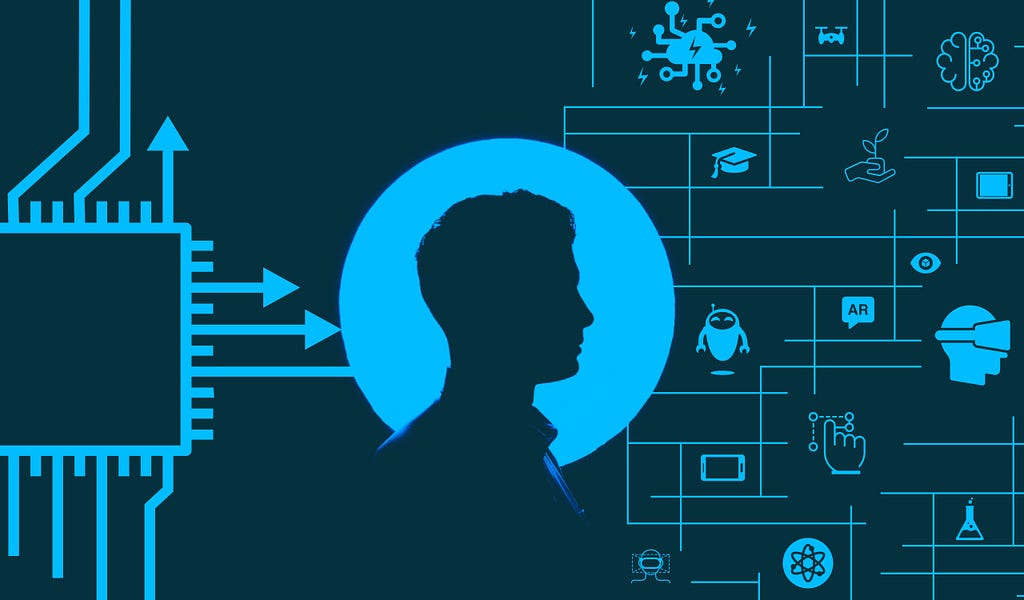Latest news about Bitcoin and all cryptocurrencies. Your daily crypto news habit.

The Big Four have been investing billions into EdTech for years now. Giants like Apple, Google, Amazon, and Microsoft, see two significant benefits to conquering the education market. First, they get to create lifelong fans by addicting students to their products from early on. Second, software giants realize the trillion-dollar potential of the market that has long been ignored by the IT.
EdTech benefits for every classroom
While teachers and parents can’t agree on the best way to educate children, most believe that changes are necessary. While two of the acknowledged educational leaders, Finland and South Korea, utilize opposing approaches, both countries are open to the use of educational software.
American teachers agree. A survey shows that over two-thirds of the American teachers want more technology in their classrooms. They believe EdTech to be a motivating factor for students. The same poll shows that educational technology allows teachers to reinforce and expand learning content, show and do things that would be otherwise impossible.
Here is just a quick overview of the benefits EdTech can bring to every classroom:
- Better communication between students, teachers, and parents. The correctly utilized educational software can increase the personal engagement between students, as well as allow parents a better understanding of their children’s progress and extra needs.
- Extended classrooms available 24/7. When schools close for the night, students have an option to continue their studies and consult the teachers through learning platforms or mobile apps. Online learning opportunities are crucial for students in rural areas.
- Increased engagement through entertainment. With a drastic decrease in attention span, gamification, VR, AR, and smartboards allow teachers to keep their classes engaged and in constant interaction with study materials.
- Personalized teaching and learning style. The educational software allows teachers to adapt learning materials and assignments to suit learners’ individual needs. This enables students who would otherwise fail the class to keep up and succeed.
- Smaller carbon footprint. EdTech reduces the need for printed handouts, tests, worksheets, and even textbooks. This means less need for deforestation and waste management.
How does educational software help schools?
Student Information System (SIS)
An SIS deals with the daily needs of the classroom. It is also sometimes referred to as a student management system (SMS), student record system (SRS) or a student information management system (SIMS). Before the age of available SIS, teachers used spreadsheets and Microsoft Access databases to keep track of their students. New EdTech solutions automate many functions and make teachers’ lives easier. SIS solutions allow instructors and schools to:
- Manage prospective students’ inquiries
- Process student admissions
- Enroll new students in classes
- Record attendances and absences
- Handle grading and assessment
- Evaluate students’ academic progress
Banner by Ellucian and PowerSchool are two examples of popular and successful SIS solutions.
Learning Management System (LMS)
An LMS is a central platform for faculty members to create and store class materials and make them available for students. Learning management systems are ideal for e-learning courses. High school and colleges can also benefit from using LMS to extend their classrooms and provide their learners with a single place to study, communicate and get evaluated.
Most LMS solutions consist of several essential parts. Content management systems allow teachers to upload lectures, additional reading, audios, videos, and photos. Teachers can also provide learners with calendars and gradebooks. Communication component usually takes on the form of a chat or a forum for students to ask questions and seek help from their teachers. Some LMS solutions include assessment features allowing teachers to create tests and quizzes and grade their students’ performance. Learners can also submit their written assignments through an LMS and receive teacher’s feedback.
Many high schools and colleges utilize Blackboard Learn, Google Classroom, and Canvas to ensure the outstanding online educational experience for their students.
Classroom Management Software
Classroom management systems are designed to improve the in-class experience for students and help teachers track their progress through means other than grades. Increased student engagement is achieved by different means. Some software products limit the students’ access to distractions: websites, programs, and gadgets. Others provide stimulating content that adds a new layer to the classroom experience and keeps students engaged.
Advanced feedback features can improve learners’ performance and behavior. Using classroom management software, teachers set individual goals for every student and track their progress, sharing the results with parents. Unlike SIS and LMS, classroom management systems provide a deeper insight into the children’s academic results and behavior for both teachers and parents.
Kahoot, ClassDojo, and McGraw-Hill Connect are among the most popular classroom management software solutions on the market.
In short, software solutions are drastically changing the landscape of education. They change the way we teach, learn and evaluate progress. While there are many great EdTech products on the market, there are still problems that haven’t been addressed. And the industry’s financial potential is compelling more and more startups to try their hand at improving the school experience for students, teachers, and parents alike.
Did you like the article? Clap us please! Share article with other people on Medium.
Visit our corporate blog FreshCode.blog for more interesting articles.
Feel free to contact us on our FreshCode.website
Follow FreshCode on LinkedIn, Facebook, Twitter, Instagram, Behance, Medium
Is EdTech the next big thing in IT? was originally published in Hacker Noon on Medium, where people are continuing the conversation by highlighting and responding to this story.
Disclaimer
The views and opinions expressed in this article are solely those of the authors and do not reflect the views of Bitcoin Insider. Every investment and trading move involves risk - this is especially true for cryptocurrencies given their volatility. We strongly advise our readers to conduct their own research when making a decision.
